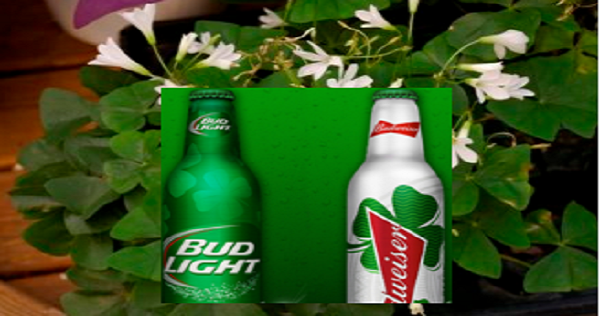
As St. Patrick’s Day has hopefully reached a safe conclusion for the millions who adopted a temporary Irish heritage, there are two common household and garden items that surely survived the 24 hour melee- holiday “limited edition” green beer and of course shamrock plants.
Of course the solution for eradicating the excess and outdated suds is self-explanatory, while committing to undertaking the care of the plants is another matter entirely. Unlike the aftermath of the holidays and the challenge of disposing of dozens of poinsettias literally scattered around the house, shamrock plants are surprisingly low maintenance and can be incorporated into the container garden as a reliable spring and summer performer. (Poinsettias are notoriously stubborn in promoting a repeat in blooms.)
The term “shamrock” actually refers to species of clovers and the most relevant and identifiable taxons exist in Europe and North and South America. The most common type of clovers, the white (Trifolium repens) and red (Trifolium pratense), are well-established as invasive weeds in lawns and landscapes. While the three-leaf (and lucky four!) configuration is readily apparent, the plants are known pests and are not commercially viable . The majority of shamrocks sold seasonally at retail outlets and nurseries are of the species oxalis regnellii, and are propagated in Mexico and South America. What makes oxalis regnellii appealing to the gardener, is that the plant derives from a bulb and goes dormant during the winter, only to thrive and bloom again during summer.
If the decision is made to maintain the services of the shamrock as a permanent resident of the landscape and maintaining an accent of the Emerald Isle, place the plant indoors until temperatures reach at least 60 degrees during the day. Once milder temperatures are consistent, the shamrock can be placed in a semi-shaded area outdoors. It may be a good idea to re-pot the specimen into a larger container with soil that drains well, in promoting growth and sustained blooms. Fortunately, the plant water requirement for the bulbs is moderate and the plant can maintain vigorous health between periodic watering events.
As the flowering season can last until the late summer, the plant will begin to show signs of decline in preparation for dormancy. Once obvious decay sets in, juvenile plants can be trimmed back to soil level and pots should be moved back indoors in all area of the US for winter, except for Florida, Arizona, and selected locales in California and the Southwest.